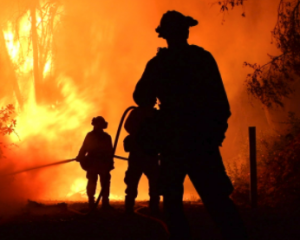The Devastating Effects of Wildfires on Minority Communities

by Sarah Walsh, Fordham Environmental Law Review, Environmental Justice Columnist
To say that 2020 has been a challenging year for all would be an understatement. Not only has the world been devastated by a deadly pandemic, but much of the West Coast of the United States has been forced to battle fatal wildfires at the same time. In 2020, California even saw its biggest wildfire in history. As of September 2020, 30 people have been killed by the fires while dozens more are still missing. For the past few months, virtually all of the West Coast states have been forced to deal with their own “twindemic.”
Due to increasing global temperatures, wildfires are escalating in intensity and frequency. According to an analysis by Climate Central, “big wildfires are [now] three times more common across the west than in the 1970s, [and] the wildfire season is [now] three months longer. Additionally, climatechange.org claims, “while climate change may not be the root cause of these extreme weather disasters, scientists have been able to conclude, with growing confidence, that climate change plays a significant role in driving both the intensity and scale of these incidents.” This year alone, “wildfires have burned over 3.3 million acres in California, which is larger than the state of Connecticut.” Recent updates report that wildfires have already burned over five million acres across California, Oregon, and Washington.
The West Coast wildfires are hitting minority communities the hardest. A recent study released by researchers at the University of Washington and the Nature Conservancy suggests that “racial and ethnic minorities face greater vulnerability to wildfires compared with primarily white communities.” According to the Nature Conservancy, “communities that are mostly Black, Hispanic or Native American experience 50% greater vulnerability to wildfires as compared to other communities.” Unlike the celebrities who can afford to protect themselves and their property by hiring private firefighting companies, people in these communities often don’t even have access to vehicles to escape the fires or other resources to protect themselves and recover after the damages.
A young girl named Ta’Kira’s story helps emphasize the fact that, not only are the wildfires physically destroying these communities, but the smoke from the fires is also causing long term health problems. Studies have shown that African American children are at a greater risk of developing asthma due to the hazardous smoke conditions in these communities. In this case, Ta’Kira’s family was told to keep windows and doors closed to keep the smoke out. However, her apartment complex was built more than 50 years ago, and other residents interviewed at the complex testified to the fact that the smoke comes right in through the windows. Ta’Kira was diagnosed with Asthma at age 5 and,during the 2017 fires, she was rushed to the hospital every three to four months due to wheezing and shortness of breath.
Wildfires have proven to be extremely deadly and, unless steps are taken towards addressing climate change, they are going to continue to get worse. While there are different approaches that can be taken to help address this issue, such as providing aid to those most in need or pushing for government action, various West Coast climate activist groups are showing that it is possible to provide assistance and fight for change. Without the assistance, resources, and voices that outside communities can provide, minority communities in these hazardous areas will continue to be at risk.

